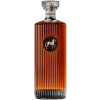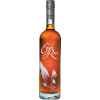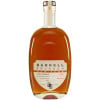About Casa Noble Special Reserve Joven Tequila
The piñas are then brought back to the distillery, where they are cooked in stone ovens for 36 hours, the slow process resulting in a deeper, sweeter, and smokier flavor. Then, the piñas are crushed and fermented using local, airborne yeasts. As a result of using local yeasts, the tequila is influenced by the estate's surrounding orange, mango, and lemon trees. Once fermentation is complete, Casa Noble Tequila is distilled three times through a copper-pot still.
Their Special Reserve Joven Tequila is a very special affair. It's a single-barrel tequila that spends 6 weeks in French oak and is bottled at 102 proof ― higher than their threesome of regular expressions. It features very prominent agave aromas, along with touches of citrus, honey sweetness, and chili pepper heat.
Get your bottle of this unique single-barrel tequila today!
About Casa Noble
Each bottle of Casa Noble Tequila is made from blue weber agave plants, which are matured exclusively on the 3000-acre Casa Noble estate. The estate, which is situated in the Jalisco region of Mexico, is nestled among rolling hills and steep valleys: "We have our own microclimate in the agave fields," explains owner Jose Hermosillo. "We grow our plants at a high altitude, and the fields are on an incline, which makes for more fibrous agaves, which yield a tequila with lots of character and spice and herbal notes. That's why we have our own agave fields, so we can control that profile and have very unique taste factors."
Once the certified-organic agaves have matured for up to fourteen years, they are harvested by Casa Noble's legendary jimadors. "We hire our jimadors full time," Hermosillo says, "so they're living on the land all their lives, for two or three generations, in some cases. So they know when the agaves are ready. Some people call them 'agave whisperers.'" After the agaves have been harvested, the hearts of the plant (piñas) are removed using a small, flat knife called a coa. "It's amazing how a jimador can touch that dark spot and say, "Oh, the sugar content of this is such and such", Hermosillo says of the piñas. "We'll take it to the lab, and the sugar content will be exactly what he said."
About Tequila
Although tequila has developed a bad reputation, there's more to the spirit than just shots on a Saturday night.
This traditional Mexican drink origins in the state of Jalisco when according to a local legend, lightning struck an agave cactus before the Nahua tribe drank its warm nectar. Behold, tequila.
Legally, tequila has to be made of 51% of Blue agave around the Jalisco region in Mexico. There are different types of tequila according to age - from the youngest representatives, blanco, reposado, and añejo, to the oldest extra añejo.
Check out our impressive selection of tequilas, find your new favorite in Top 10 tequila & mezcal, or explore our treasury of Rare & hard to find tequilas.











